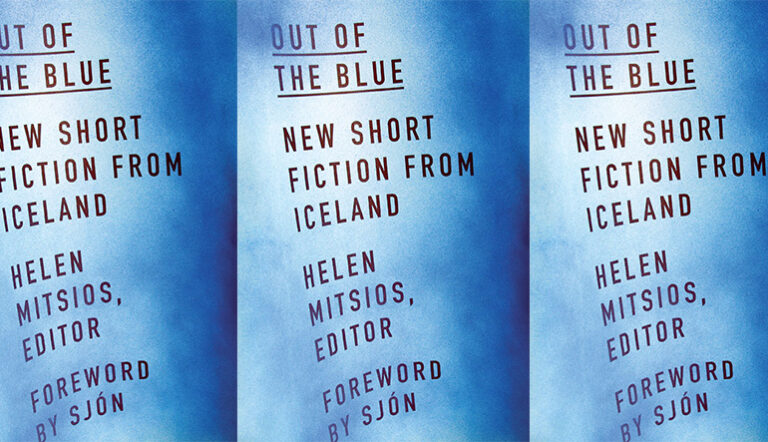Cockfight by María Fernanda Ampuero

Cockfight
María Fernanda Ampuero
Feminist Press | May 5, 2020
At a recent #DignidadLiteraria town hall in San Francisco, Colombian author Juli Delgado Lopera discussed her frustration with not being asked about her craft. Instead, white reviewers focus on how Latina she is. Ecuadorian author María Fernanda Ampuero, writer of the short story collection Cockfight (Pelea de gallo), shared a similar sentiment at the 2019 Guadalajara Book Fair when asked about her feminist activism: “[they] never ask me about my aesthetic approach, about my references within world literature, about my next work.” In her perspective, women are grouped together to talk about the fact that they are women, when, really, Ampuero and her peers are writing about other complex topics. For Ampuero, it’s violence in Latin American families.
Translated by veteran Argentinian translator Frances Riddle, Ampuero’s Cockfight explores alternatives to the male-centered family unit across various social strata, depicting strong and weak women, children coming of age and being violated, and maids who critically observe the families who employ them. Her sparse prose focuses on character, narrowing the distance between the body and its experience of violence. Combining structures reminiscent of fairy tales and horror films, genres that often fall back on portraying subservient women characters, Ampuero upends these conventions by decentering the male gaze and reversing tropes. Her work plays between Carmen María Machado’s queer theory and exploration of domestic violence in Her Body and Other Parties and Helen Oyeyemi’s speculative and fairy tale elements in What is Not Yours is Not Yours.
In the opening story, “Auction,” a woman is kidnapped, blindfolded, and tied up with a group of others. She picks up the scent of roosters and knows exactly the kind of men she’s surrounded by, having grown up working with her father at cockfights. The protagonist listens as the other captives plead for their lives. She then uses her body as a weapon, making herself defecate so the rich men who bid on the captives won’t want her. She makes her body, which the men want to ogle over, monetize, and sexualize for their pleasure, something grotesque. What men view as monstrous, however, liberates the character from bondage, allowing her to regain control. “I know this is the most important thing I will do in my life, so I do it right . . . I start to laugh, deranged, to laugh, and laugh, and laugh.” They beat her, and no one bids a cent, the woman left on the side of the road with her life intact. Her repeated laughter functions as a kind of ironic La Llorona cry that echoes throughout the collection, as the women navigate and, at times, return to male violence.
But women do not always win in Cockfight; they’re flawed heroes who live in a stark reality. With “Monsters,” Ampuero posits a sociopolitical message through a metatextual layer. Girls watch scary movies and read princess stories. They learn how men in fiction, especially fathers, kill their daughters. Later, when the maid of the central family is raped, we understand the ironic, tragic foreshadowing Ampuero built into the story within a story. She warns that girls, in fiction and in reality, are exposed to male violence when we normalize it in the narrative; it’s threaded into a cultural fabric girls (and women) must cut themselves out of from the inside.
Perhaps the most constant theme in Cockfight is that of ruptured families trying to reinvent the family unit. They’re wrecked by the “heads” of the house, yet these men also find themselves removed, maimed, or killed. Ampuero unpacks alternative gender power structures—brave women, leaders of families, teenagers exploring their sexuality. In “Nam,” a coming of age lesbian experience turns into an orgy, a brother and sister laying with their girl friend from school. An outsider herself, this girl relates to the siblings’ outcast label as white Ecuadorian Americans, staring at their light skin. Their father presumed dead, the protagonist fills an empty space, creating a new family trio. “The three of us kiss desperately, like orphans, like castaways. Hungry puppies licking up the last drops of milk.” In “Blinds,” three cousins, and later a mother, son, and grandmother, try to understand their sexual desires after the death of the father. And the characters in “Mourning” do anything but mourn when the mother, Marta, sits at the head of the table to celebrate her husband no longer being there. Ampuero reinvents a rule of three in these fable-like stories, questioning the notion that a home is weak without a man. She places the father figure outside the family unit, a wolf absent and unable to blow the house in.
Two later stories in Cockfight, “Ali” and “Coro,” stand out for their binary nature, showing two sides of a maid’s experience. In the former, a maid looks back on raising another woman’s children, debating the irreducible maid-child relationship. “They grow up right there in the kitchen: eating until they get big, and then it seems weird to them to love you so much.” In the latter, Ampuero builds tension to a satisfying conclusion when a group of wealthy, white Ecuadorian women break into a black maid’s bedroom to try on her clothes. They claim how different the black woman smells from their upper, lighter-skinned class peers. When they find a doll that looks like one of them, they try to quell their fears that anything out of the ordinary could happen. In both instances, maids live in the house and near the family but are not part of it. These working-class women, de facto mothers who are at times treated like servants, are trapped in a liminal space between physical space and the familial circles they cannot enter. The grown-up children in “Ali” can’t name this space, but they feel it; the women in “Coro” know it and demand the maids stay trapped there, maintaining the master-servant dynamic that guards white privilege.
Ampuero treats each story like a different room in a house, opening one door after another. Each space slightly different than the other, we find ourselves trapped in a world we don’t want to recognize. The carnival of genre and theme, however, make us lean in and, in other moments, flinch. Physical and sexual violence drive the narratives, and there’s no attempt to pull punches from the topics Ampuero engages socially and politically. To the author’s point above, these difficult themes come from varying perspectives but are too often narrowed to the male writer. In Cockfight, Ampuero enters into critical dialogue with form and substance, paying homage while imploding the very structures that she winks to us.


